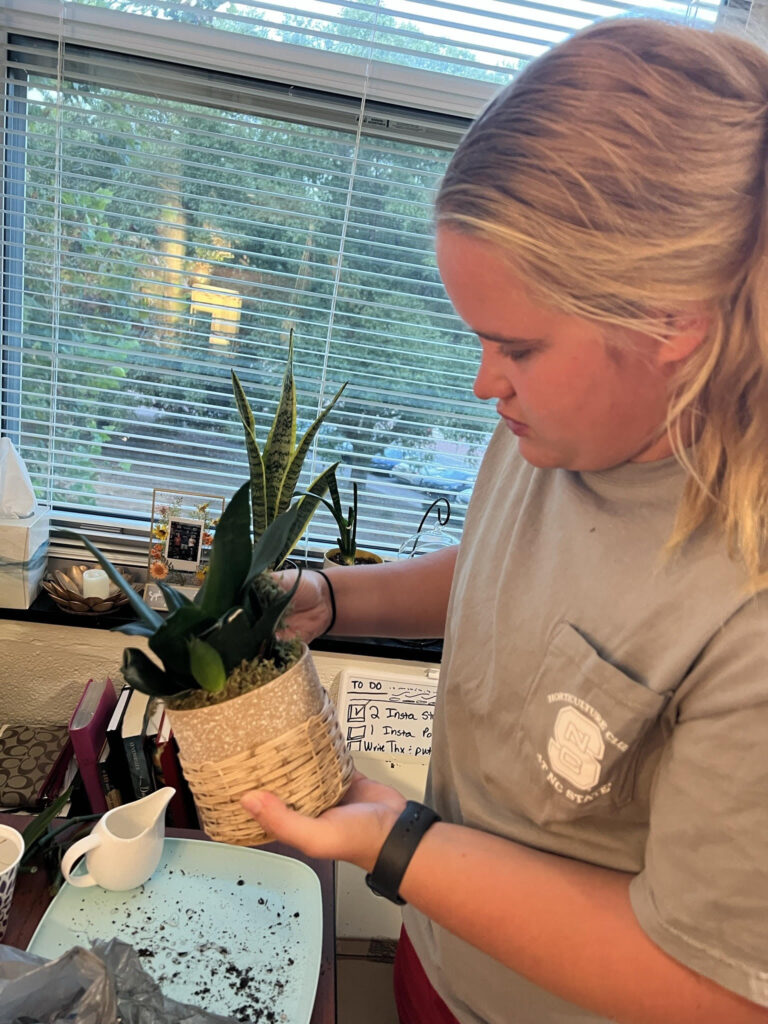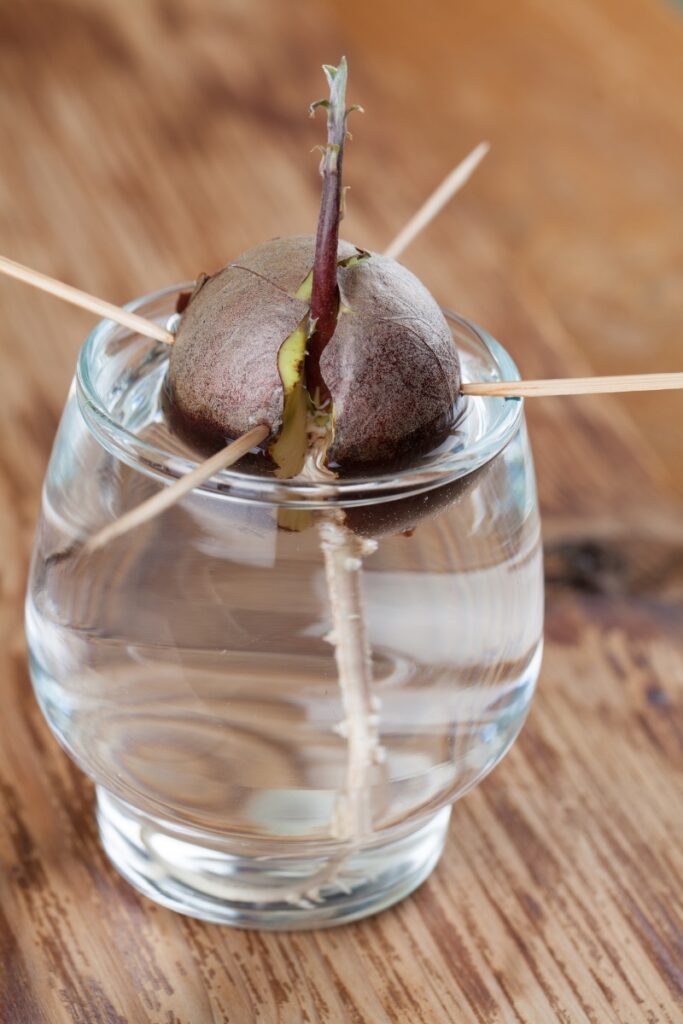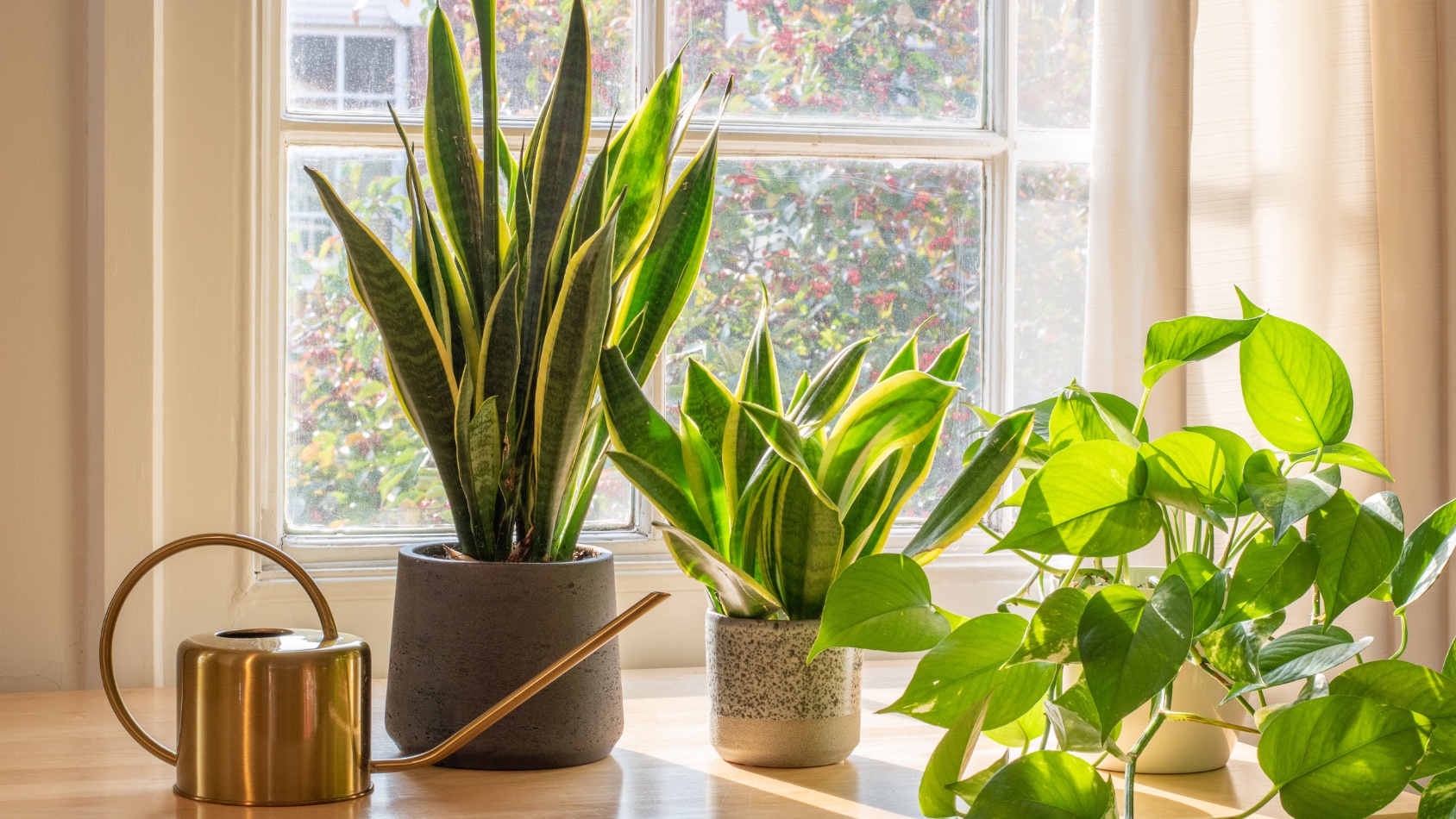From boosting positive emotions to reducing stress, houseplants provide many benefits, especially for college students. However, it can sometimes be difficult to take care of plants in a dorm or apartment with poor lighting, limited time and a small space. Two College of Agriculture and Life Sciences students, Madeline Kluttz, a horticulture major, and Sydney Blair, an agroecology major, give tips on how to choose houseplants (on a budget) for your home away from home and help them survive and thrive.
Where can I buy houseplants on a budget?
Kluttz and Blair say it’s easy to find houseplants on campus.
“NC State students like to trade cuttings. You can join the Horticulture Club, and there are social media groups you can connect with, too,” Kluttz says.
Students can purchase houseplants on campus from plant sales hosted by student organizations, like the Horticulture Club and Pi Alpha Xi, and there’s a free seed cabinet in Kilgore Hall.
Blair adds that if you’re taking a horticulture class, you are likely to get lots of plants. Many courses have a hands-on learning component that includes live plants, and students can keep them. Depending on the class, you may even be able to continue the research project you started using your new plant.

Off-campus, plants can be purchased from farmers markets, including the State Farmers Market, or online from Etsy or other online plant shops. Kluttz also suggests checking the clearance section of garden and home improvement stores for plants with minimal damage that can be repotted or watered. With just a little love, many plants can be brought back to health.
Which plants are the best for a dorm or apartment?
Kluttz and Blair recommend plants that can survive in low light, such as snake plants, pothos, some philodendrons, air plants, African violets and jade plants. Plant size is also an important consideration.
“Keep in mind what your space can handle,” Blair says. “A dorm is not the best home for a seven-foot Monstera, which grows vigorously, so just wait a little while for that one.”
How do you overcome the shade that is in a dorm room or apartment?
Kluttz advises putting plants as close to a window as possible. “If you see that your plant is struggling in low light, put it in a location with more light.”
And if you want to grow a plant that requires more light, Blair says students can add grow lights that fit in lamp sockets or light strips. It’s best to buy lights that are graded with light levels, including intensity and the type of light.
What is a common mistake you see students make with their houseplants?
“The No.1 mistake I see people making with their plants is overwatering or underwatering,” Kluttz says. “Most of the time, people water their plants too much as if they are located outdoors.”
Since dorm and apartment plants don’t get direct sunlight, they don’t absorb as much water, meaning they only need occasional watering.
“The problem is always, always, always overwatering,” says Blair. “When your leaves start to droop or even lose that glossy look, give them a drink.”
Also, it’s best to use pots with holes so water can flow through the pot. However, there shouldn’t be a lot of water sitting in the saucer.
What is your best experience with growing a plant in a dorm?
Kluttz says she had success growing houseplants during her first semester at NC State, even with a smaller space than she was used to.
“I brought a snake plant, agave, orchid and Monstera,” she says. “With a consistent watering schedule, I had no issues at all.”

Meanwhile, Blair has a thriving avocado plant at her apartment. Growing one, she says, is much easier than people realize. Take a small cup or jar, fill it with water, and put a few toothpicks in the avocado pit. Set the pit in the water, and, before long, you will see roots growing.
Becoming a dorm plant parent offers a rewarding experience if you remember a few key things:
- You can overcome the challenge of limited dorm room light by strategically placing the plant by a light source, and, if needed, use grow lights.
- Follow a consistent watering schedule and let the plant “tell” you if it is thirsty by checking the top of the media to see if it’s dry.
- Each plant represents an opportunity to learn, so remember to have grace with yourself as you become a dorm plant parent.
- Categories:



